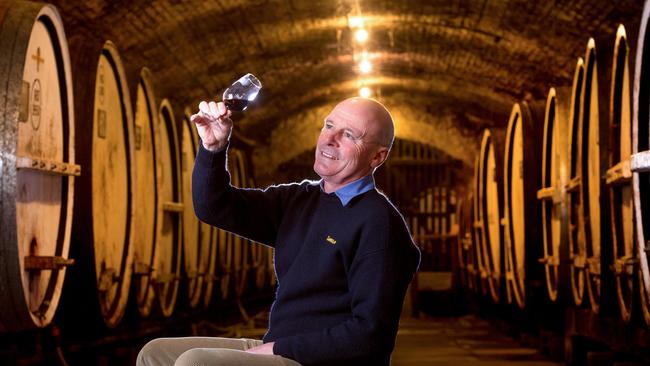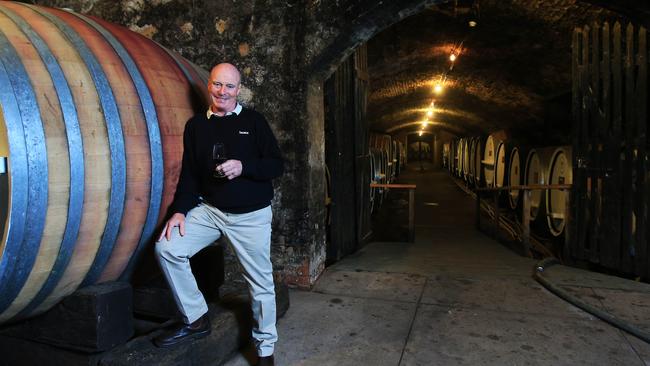Tahbilk owner warns China not the ‘silver bullet’ to wine ills as Chinese market shrinks by half
A slowing Chinese economy has seen its wine market halve, with one local winemaker warning even if the crippling tariffs are removed it won’t help fix the Australian sector.

Alister Purbrick, the boss of Tahbilk, the oldest family-owned winery and vineyard in Victoria, is confident the Chinese market will reopen to Australian wine next year, but has warned China’s thirst for our wine — or any wine for that matter — has shrunk by as much as 50 per cent as the regional giant’s economy slows.
Mr Purbrick said barring some unforeseen diplomatic incident he expected Chinese regulators to dismantle crippling tariffs on Australian wine after the current review, and following the recent reprieve also given to Australian barley. But the days of China being a billion-dollar market for our wine were over.
“We have got a bit of good news around China potentially opening after they do their five- month review. I think it will definitely happen, given where Australia and China’s relationship is now and unless something comes out of left field that derails it, something huge, I then think like barley it will get through, they drop the tariffs and then we will be off and running.
“But it won’t be the silver bullet as everyone thinks because the China wine market has shrunk by 50 per cent because of the economy,” Mr Purbrick said.
China was a gold mine for Tahbilk and many other Australian winemakers, with the winery selling almost 25 per cent of its production to the country before the imposition of 200 per cent-plus tariffs in November 2021 snuffed out a $1.3bn export market.

In September, China’s Commerce Ministry suggested Beijing was willing to “meet the Australian side halfway” to broker an end to the tariffs, which Canberra has taken to the World Trade Organisation.
Now with the market possibly reopening, local winemakers are licking their lips at the prospects of Chinese drinkers once again filling their glasses with Australian wine.
But Mr Purbrick said the re-entry into China was unlikely to be as lucrative a proposition as it was before the tariff wall went up. He believes premium brands will be favoured but the Chinese market will be much more difficult for entry-level wines, and overall the market once worth $1.3bn to Australian winemakers will be far smaller.
“The best that Australia can hope to reclaim if it opens up and the tariffs are dropped is around $500m or $600m, and most of that is going to be with regional brands through to flagship wines.
“It’s not going to be great news for inland growers because our international competitors have filled that void, big time. From South America, South Africa, Europe … the cheaper end of the market, and arguably they are making as good a wine as Australia and they’re still making it cheaper.
“The opportunity is at the high margin, and that’s the good news … It (China) is still going to be Australia’s biggest market — let’s not lose sight of that — but it’s not going to get back to what it was.”
Last month Pernod Ricard Winemakers’ CEO Bryan Fry, whose Jacob’s Creek label was one of the biggest-selling imported wines into China before the tariffs, handed down a similar warning.
Tahbilk has borne the cost of the shuttered China market as well as floods at its key central Victorian vineyards which recently wiped out large swathes of its harvest, while the loss of a key distributor in the US and tougher market conditions in Britain saw revenue flatten and losses grow.
It reported a loss of $2.076m for 2023 against a profit of $1.255m in 2022.





To join the conversation, please log in. Don't have an account? Register
Join the conversation, you are commenting as Logout